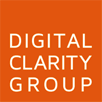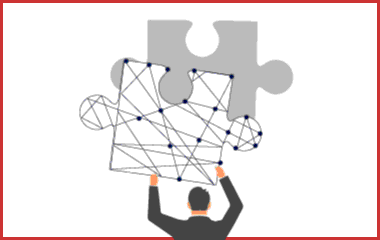Can SAP’s new C4/HANA suite lead the digital experience revolution?
After attending the SAPPHIRE conference in Orlando this week, I leave feeling slightly puzzled, but also slightly bullish on SAP’s future in digital experience (DX). Given it is SAP’s flagship conference, SAPPHIRE covers a wide range of technology topics. And, while meaningful to me, DX is hardly the primary topic on most attendees’ minds given their varied backgrounds in back-office support. However, DX had a main stage presence this year and was emphasized much more than normal given the rebrand of Hybris to C4/HANA. While it doesn’t exactly roll off the tongue, the new name follows suit with the S4/HANA naming convention, and that alignment seems to be a primary reason that the former Hybris suite seems to be getting more attention by the tech giant. SAP claims the “C” stands for customer, and the “4” is for 4th generation CRM, as they look to redefine CRM and challenge Salesforce directly, a competitor CEO Bill McDermott refers to as “legacy”, which is comical on a number of levels. For one, the irony of SAP calling Salesforce “legacy” is just hilarious, and two, it means I’m really getting old. First, my 10-year old son refers to songs from my high school era as “oldies”, and now this. Ho hum.
In any case, here are a few take-aways from the conference from my perspective:
- Honestly, it baffled me a bit that SAP ignores its own history in the “legacy CRM” space. If this is “4th generation CRM”, then SAP was a Godfather of at least generation 1 and possibly generation 2. In the press release announcing C4/HANA, McDermott says, “SAP was the last to accept the status quo of CRM and is now the first to change it. The legacy CRM systems are all about sales; SAP C/4HANA is all about the consumer.” Huh? For goodness sake, SAP was the flagship of CRM at one point, duking it out against Oracle for the top spot. Then they doubled-down and bought Siebel. Siebel! SAP = “Legacy CRM”! It was Salesforce that came along and disrupted *their* (SAP’s) view of CRM. In response, SAP launched CRM On Demand back in early 2006. So that comment by McDermott confuses me. But everyone from SAP seemed to embrace it — they were all talking as if this is their first foray into CRM, and they’re coming in with their contemporary guns ablazin’. It would be less disingenuous if they said they want to modernize the role of CRM since it has gone astray from its original purpose, but to say they were “the last to accept the status quo of CRM”… Geesh, they set the status quo.
- All that aside, I’ve always agreed that CRM was supposed to have a broader definition than just sales force automation. In our recent DXP research (registration required, but man is it worth it!), CRM was chosen by buy-side organizations as the #1 center-of-gravity technology for the digital experience platforms they’re assembling. We know first-hand that many organizations are looking to CRM systems to play this role, but we also realize that “CRM” was likely viewed by our research respondents as a proxy for the system in which they’re attempting to unify all their customer data. We know that many organizations are looking towards Customer Data Platforms (CDPs) or they’re creating data lakes, etc., all in search of the “360-degree, single view of the customer” holy grail. So, a focus on this by SAP is very smart, especially given both their central role in digital transformation for many large enterprises and, by the way, the history of their association with CRM.
- However, let’s be clear: I agree both that a solid customer data repository is critical to a successful customer and digital experience strategy, AND that CRM needs to be modernized in order to play that role. However, Gigya (SAP’s 2017 acquisition), which is the underpinning of SAP’s play in this ‘modern CRM space’, doesn’t suffice alone. CRM as sales force automation (SFA) may be too limited, but it’s got to be more than just privacy, identity, and consent management, which is Gigya’s role, and the primary talking point from every SAPer at the event. Believe me, we understand the relevance of GDPR (DCG was the first to sound the alarm back in April 2016, long before anyone cared — just search our site for dozens of papers, blogs, webinars and videos on the subject), but identity and access management (IAM) is not the only consideration here. If SAP wants to argue that IAM should be the basis of the new customer data backbone on which organizations should build their DX strategies, etc., then they should make that case. But, one *cannot* say that IAM is a replacement for CRM more broadly…the two just aren’t even close to equivalent. And anyone who’s shopping for CRM in the current context (or scoring it in their analyst plot graphs) will be completely unenthusiastic and thoroughly confused about C4/HANA’s offering, so I believe they have a branding issue there. Or, at least, they need to hone their talking points.
- The relevant question for those of us that follow the DX market is whether or not C4/HANA enables SAP to give other DX solution vendors such as Adobe a run for their money. I think it could in the long-run as their front-office-back-office story is a good one. In the short run, much of what we heard about this week is uber-nascent. SAP has made some nice acquisitions with Gigya, CallidusCloud, and Hybris, but as a “suite”, SAP admits very little integration has taken place thus far amongst them. It seemed to me that the staffers at SAP were almost caught off guard by the rebrand, and they just weren’t ready yet to answer any below-the-surface questions about how all this will come together. They didn’t quite know how to tell the story about YaaS (Hybris as a Service) being deep-sixed, for example. It’s not atypical for any large vendor to get out in front of their skis from a messaging standpoint, but that is indeed the case here. That said, I do think the connection to the back-office will give SAP a nice leg-up on *true* customer experience management down the road. I’ve said this before a gazillion times, but CX is not just about prospects (or marketing), it’s about *customers*. So, the connection to the back-office via enterprise resource planning (ERP) solutions should not only allow SAP’s DX solutions to know much more about inventory availability (why promote a product that’s out of stock?), or shipment dates or other critical information that affects customer satisfaction, but it should also provide a lot more insight about the customer themselves, such as what products they already own (regardless of how they acquired them…most solutions are only channel-aware), whether they’ve paid their last bill, whether they’re having problems with a product and are working with support, etc. — insights that come out of parts of ERP systems. This would ensure that their digital experiences are not just based on customer [buying] preferences, but also that they’re based on any of a multitude of past customer interactions as well as internal information critical to delivering products and services. That could be personalization at another level entirely.
- Even when it matures, I don’t see C4/HANA having much, if any, pull-through effect for the rest of SAP, and I’m not sure SAP does either. By this I mean that no customer is going to buy into the CX vision and then go acquire SAP back-office ERP products in order achieve it. You don’t bake the cake to suit the icing. And since C4/HANA as a suite (not as individual, best-of-breed products) is fairly immature, I don’t see it beating other leading DX players in a bake-off at a prospect organization that isn’t already powered by SAP. If you’re not already on SAP, why would you commit to C4/HANA as an all-in suite today? First off, buyers don’t buy that way, and we proved that in our latest DXP research. But I also don’t foresee anyone buying the idea of the end-to-end front-office/back-office story if they’re not already built on SAP. HOWEVER, I do foresee SAP finding lots of success selling into their existing ERP customer-base and convincing them that the data SAP already manages for them will make the their digital experiences much more relevant for their customers. That, to me, will be a compelling sell. And an SAP customer will likely forgive some of the immaturity or lack of bells and whistles for the broader transformation and powered-by-HANA stories. And SAP has *lots* of very large customers in various stages of digital transformation.
- Finally, I just not sure which partners can make this vision come to fruition. I think this will be a problem. None of the digital agencies that currently work with Hybris-come-C4/HANA can tell this story meaningfully, and they certainly can’t bring it to life since they work on the front-office side. It’s going to have to be the giant SI’s who play here, but front office really isn’t their strength. Even the Digital and Interactive divisions of the Deloittes and Accentures of the world don’t know both ends of the front-office/back-office spectrum. I think SAP is going to have a go-to-market challenge on this front, and I predict many large customers spending oogles of money on gigantic initiatives that won’t see the light of day for a while, less because of the products and more because of the capabilities of the solutions partners Enablement will need to become the number one priority of the partner program moving forward in for the end-to-end story to come to life. Viewing the channel as merely a sales vehicle could prove problematic.
Overall, I’m bullish on C4/HANA’s long-term prospects, but mostly because it’s SAP, and because SAP has a huge customer base including some of the largest customers in the world. If the full organization gets behind it, which the naming alone seems to indicate it finally has / will, then it will have a significant impact assuming they solve the partner challenge. There’s much to be done, but I like the direction so far.








